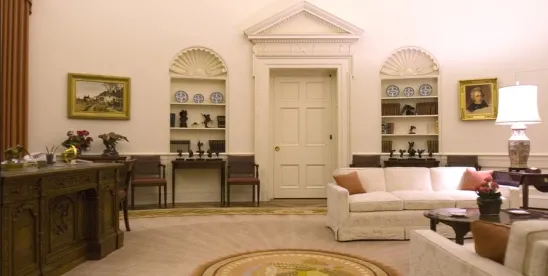Following the elections in November, Republicans will preside over a unified government with control of the White House and majorities in both chambers of Congress. This shift in party control follows eight years of contentious rulemaking and executive action by the Obama Administration on issues spanning the environment, health care, financial services, labor, and immigration that Republicans characterized as executive overreach and a shift of power away from the legislative branch.
Republicans have been strategizing various approaches for rolling back certain regulations and executive actions and shifting the balance of power back toward the legislative branch. President-elect Trump and congressional Republicans have several tools to aid in achieving these goals, including the incoming president’s authority to revisit President Obama’s executive orders and Congress’s authority under the Congressional Review Act to rescind recent Obama Administration regulations with only a simple majority vote in both chambers of Congress. The commitment to bring about sweeping change, combined with legislative and executive tools to implement it, suggests an uncertain regulatory environment for stakeholders across multiple industries in the year ahead.
I. Authority to Rescind or Modify Executive Orders
Executive orders are directives or actions by the president. When they are founded on the authority of the president derived from the Constitution or statute, they may have the force and effect of law. As such, the new president could revoke, modify, or supersede executive orders issued by any predecessor. An order may also direct the heads of executive branch departments and agencies to rescind orders, rules, guidelines, and policies that implemented an executive order to the extent permitted by law.
II. Executive Authority to Suspend Regulations That Are Not Yet Final
A new Trump Administration may issue an executive order suspending new regulations that have not yet been finalized and published in the Federal Register. Following each of the last two presidential elections that resulted in a change in party control of the executive branch, the George W. Bush and Obama Administrations issued directives to agencies requesting that they refrain from sending any proposed or final regulation to the Office of the Federal Register (“OFR”) or withdraw any regulation already sent to OFR that has not yet been published in the Federal Register. This directive gave the incoming administration an opportunity to review pending regulations for consistency with administration policy.
III. Executive Authority to Suspend Final Regulations That Are Not Yet Effective
A new administration may also suspend final regulations that have been published in the Federal Register, but have not taken effect, for purposes of determining whether the regulation should be implemented, modified, or rescinded. Suspension of a final regulation’s effective date is often considered a final agency action, which is typically reviewable in court under the Administrative Procedure Act (“APA”). In 2009, the Obama Administration requested that agency heads consider postponing the effective dates of certain final regulations already published, but not yet effective, for 60 days for purposes of reviewing questions of law and policy raised by the regulations. To avoid the potential for judicial review as a final agency action under the APA, if the extension was granted, the agency was required to immediately reopen the notice and comment period for 30 days. After 60 days, if the regulation was found to not raise substantial questions of law or policy, then no further action would be required. If the regulation was found to raise a substantial question of law or policy, then the agency was directed to notify the Office of Management and Budget.
IV. Executive Authority to Rescind Final Regulations That Are Effective
As a matter of administrative law, an agency may only rescind a final rule that has been published in the Federal Register by undertaking a new notice-and-comment rulemaking and providing a rational justification for why the rule is no longer appropriate. This higher standard can limit an administration’s ability to completely abandon an existing regulatory scheme; however, it permits an administration to implement well-reasoned alternatives. Rescissions are subject to “hard look” review under the APA and require “a reasoned analysis for the change beyond that which may be required when an agency does not act in the first instance.” Courts will consider whether the agency “examine[d] the relevant data and articulate[d] a satisfactory explanation for its action including a rational connection between the facts found and the choices made.”[1]
V. Congressional Authority to Rescind Regulations Under the Congressional Review Act
The Congressional Review Act (“CRA”) requires agencies issuing a “major rule” to delay the effective date by 60 days and submit the rule for review by Congress. Under the CRA, Congress may pass a joint resolution of disapproval that, if signed by the president, deems the rule to not have had any effect at any time. Because the president retains the right to veto such a resolution, the CRA has rarely been successful for rescinding regulations. However, with a unified Republican government, the CRA may be a powerful tool for undoing many Obama Administration regulations dating back to the middle of 2016 with simple majority votes in both chambers of Congress.
VI. Other Congressional Authorities to Curtail Agency Action
Appropriations Riders. Congress retains the authority to limit agency action through the appropriations process. By including a provision in appropriations legislation called a “rider,” Congress may prohibit an agency from using appropriated funds to carry out a designated activity. Because funding bills are so broad and are often “must pass” for purposes of continuing government operations, they are commonly used to secure policy changes that may not easily be achieved through standalone legislation.
Traditional Repeal. If the CRA is not available to rescind a regulation under expedited rules and a simple majority vote in the Senate, Congress may pass a law overturning a regulation under regular order.
Conclusion
Throughout the campaign, President-elect Trump proposed to dial back many of the Obama Administration’s most controversial executive actions and begin to shift power back to the legislative branch. The incoming president and Republicans in Congress have considerable authority to make progress toward that goal, but, despite having such authority, their plans for exercising it remain unclear. The resulting uncertainty highlights — for stakeholders across multiple industries — the importance of engaging with policymakers in Washington, D.C. The Public Policy and Law practice at K&L Gates is uniquely capable of combining a deep understanding of the political process with the resources of a global law firm to develop comprehensive government relations strategies to better position clients during these uncertain times.
[1] Motor Vehicle Mfrs. Ass’n v. State Farm Mut. Auto Ins. Co., 463 U.S. 29, 42–43 (1983).






 />i
/>i
